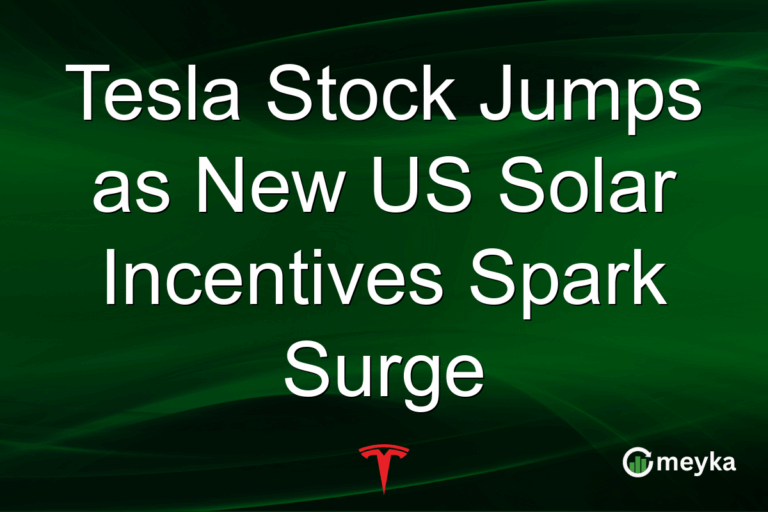Tokyo Auto Show 2025: Electric Cars Shine, but U.S. Tariff Tensions Persist
Introduction
The Tokyo Auto Show 2025 (also branded as the Japan Mobility Show 2025) opened on October 30, 2025 in Tokyo and is running through November 9 at the Tokyo Big Sight exhibition space. This year’s key theme: electrification and futuristic mobility solutions ranging from new EVs and micro-mobility devices to robotics and flying taxi concepts. Yet, behind the futuristic sheen lurks a heavyweight issue: the renewed U.S. auto tariff regime under Donald Trump’s administration is casting a shadow over Japanese automakers’ profitability and export strategies. For investors following the auto & mobility sector, the interplay of technology trends and geopolitics at this show offers meaningful insights into which companies might thrive and which might face headwinds.
1. Electric Vehicle Innovation Takes Centre Stage
EV Highlights and Trend Signals
This year’s show places EVs front and centre. For example, several Japanese automakers emphasised practicality and sustainability over pure performance: the focus has shifted from “flashy concept” to “real-world deployment”. Conferences and press releases from the event confirm that major brands are pushing EV models alongside hybrids and hydrogen-powered vehicles.
Company Spotlight: Toyota Motor Corp.
Toyota posted global sales of 5,643,042 units in the April–September 2025 half-year—a 5 % increase from a year earlier. Notably, U.S. sales rose by more than 14 % even as China and Japan saw declines. Toyota’s focus on EVs, such as its bZ-series and the new Land Cruiser FJ concept, reflects its pivot in Tokyo. Looking ahead, for investors the takeaway is clear: Toyota appears to be balancing legacy internal-combustion business with a more aggressive electrification path.
Investor Takeaway
The electric-mobility wave is no longer optional—it’s near-term. Companies that have clear EV roadmaps and can scale production efficiently will likely capture a growing share of the electrified market. For investors, prioritising auto manufacturers that show both innovation and cost discipline makes sense.
2. Tariff Tensions and Export Pressure
U.S. Tariff Headwinds
While the show dazzles with new tech, the business backdrop is challenging. The U.S. tariff on Japanese-built autos and parts has been set at 15 %, up from a prior 2.5 % and a mitigation from a threatened 25 % rate. Industry estimates suggest these levies could cost Japanese automakers more than ¥2 trillion (roughly US $13 billion) in annual operating profits.
Company Spotlight: Mazda Motor Corp.
Mazda has been flagged as one of the worst-hit firms under the tariff environment. Its heavy export bias to the U.S. market means the higher duty environment strains margins and forces potential production realignment. This suggests that Japanese OEMs may need to shift production to the U.S. or adjust export volumes to mitigate tariff drag.
Investor Takeaway
Tariffs act like a tax on export business. Automakers with heavy U.S. exposure, weak localisation, or inflexible production networks may carry hidden risk. Investors should assess how companies are realigning supply chains or hedging tariff exposure to protect margins.
3. Mobility Ecosystem Beyond Cars
Expanding the Lens: Beyond Vehicles
The Tokyo show is about more than cars. For example, Honda’s Uni-One personal mobility device exemplifies how automakers are entering adjacent mobility spaces. Likewise, Toyota displayed a helicopter-like aircraft developed with U.S. partner Joby, signalling entry into aerial mobility. Meanwhile, Chinese automaker BYD Auto plans to debut a kei-car EV in Japan, targeting one-third of the market served by ultra-compact vehicles.
Company Spotlight: BYD Auto
BYD’s move into Japan with a kei-car EV expected to launch in late 2026 is particularly noteworthy. It suggests that competition in Japan’s EV market is intensifying, and that non-Japanese players are actively entering historically sheltered segments. For investors, it signals potential market-share erosion for domestic brands over time.
Investor Takeaway
Investors should view “mobility” not just as cars but as a broader ecosystem—including aerial devices, personal mobility, micro-EVs, and mobility services. Firms that are agile in this broader ecosystem may gain competitive advantage.
4. Market Sentiment & Investor Reaction
Sentiment Snapshot
Social media and industry commentary reflect mixed sentiment: while the show’s techfirst orientation excites, concerns around tariffs and production shifts dampen optimism. For example:
“The Tokyo Mobility Show is highlighting more than just cars … looming in the backdrop is the threat of auto tariffs under U.S. President Donald Trump, raised to 15%…” (AP News)
Investor Behaviour
Investors appear to favour automakers that have strong EV pipelines and diversified regional production (for example, increasing U.S. manufacturing). Conversely, firms heavily reliant on exports to the U.S. without localisation are treated with caution.
Investor Takeaway
Market sentiment will likely reward companies that communicate clear strategies for tariff mitigation and aggressive electrification execution. Investors should follow corporate disclosures closely and monitor margin impacts from exports and tariffs.
Conclusion
The Tokyo Auto Show 2025 underscores a pivotal moment in mobility: electric cars and next-gen mobility devices are rapidly moving from concept to reality, and automakers are making visible commitments. Yet, the spectre of U.S. tariffs continues to weigh heavily on Japanese OEMs, demanding strategic adaptation. For investors, the actionable takeaway is to focus on firms with dual strengths: innovative EV & mobility offerings and resilient global production/export structures that can withstand trade headwinds. In short, the winners will be those who can execute across both technology and geopolitics—not one without the other.
FAQs
The focus keyword is Tokyo Auto Show 2025. It is used early in the article and appears throughout to maintain relevance for SEO.
Very significant. Japanese automakers face an effective 15% tariff on vehicles/parts exported to the U.S., up from 2.5%, and estimates suggest more than ¥2 trillion (~US $13 billion) could be shaved from annual profits.
Major players such as Toyota, Lexus, and Daihatsu (Toyota group) have revealed multiple EV and mobility concepts. Likewise, new entrants like BYD are making strategic inroads. For investors, companies with clear EV roadmaps are best positioned.
Yes, especially around tariff exposure, supply-chain disruption (e.g., chips and rare earths), and aggressive competition in EVs. Companies that lack diversification or agility may face margin erosion.
The Japan Mobility Show runs through November 9, 2025, so investor follow-up is timely this quarter. Beyond that, global auto-shows in 2026 (e.g., Detroit, Geneva) and quarterly earnings updates from major automakers will provide fresh signals.
Disclaimer:
The content shared by Meyka AI PTY LTD is solely for research and informational purposes. Meyka is not a financial advisory service, and the information provided should not be considered investment or trading advice.






